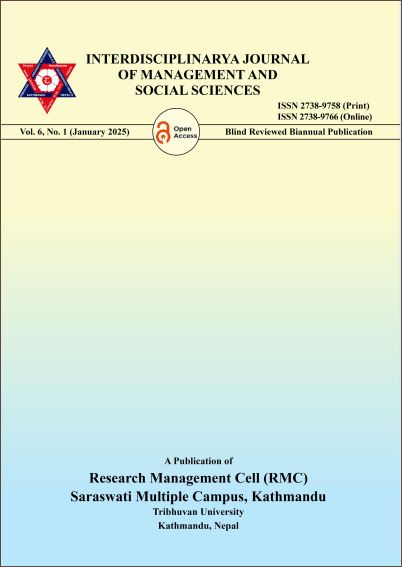Class Power Relations in the Story 'Lahuri Bhaisi'
DOI:
https://doi.org/10.3126/ijmss.v6i1.75413Keywords:
Subordination, Class, Knowledge, DominationAbstract
The presented research article focuses on the analysis of class power relations expressed in the story titled ‘Lahuri Bhainsi’ written by storyteller Ramesh Bikal. The necessary materials for this article have been collected from library sources and conclusions have been reached through qualitative methods after reading and analyzing the story. The article has made a theoretical analysis of class power relations and analyzed the class status, class consciousness, class interests, and class discrimination and exploitation of the characters used in this story. In the course of the analysis, the characters have been analyzed by linking class with the economic status of the characters and by analyzing the class of the characters, it has been pointed out that the form of class consciousness and class consciousness in this story is clear in the upper class and somewhat vague and mixed in the lower class, and it has been concluded that the consciousness of the lower class is divided due to the dominance of the upper class in the means of production and social justice and knowledge. Thus, due to the inequality of class consciousness, the class power relations are unbalanced, and the life of the lower classes has become problematic, class discrimination, oppression and exploitation have reached their peak in society, and due to the lack of class consciousness among the lower class characters, the consciousness of class interests has become weak and divided, which has contributed to class discrimination, oppression and exploitation, and the class power relations have become unbalanced, and the life of the lower classes has become subordinate.
Downloads
Downloads
Published
How to Cite
Issue
Section
License

This work is licensed under a Creative Commons Attribution-NonCommercial 4.0 International License.

